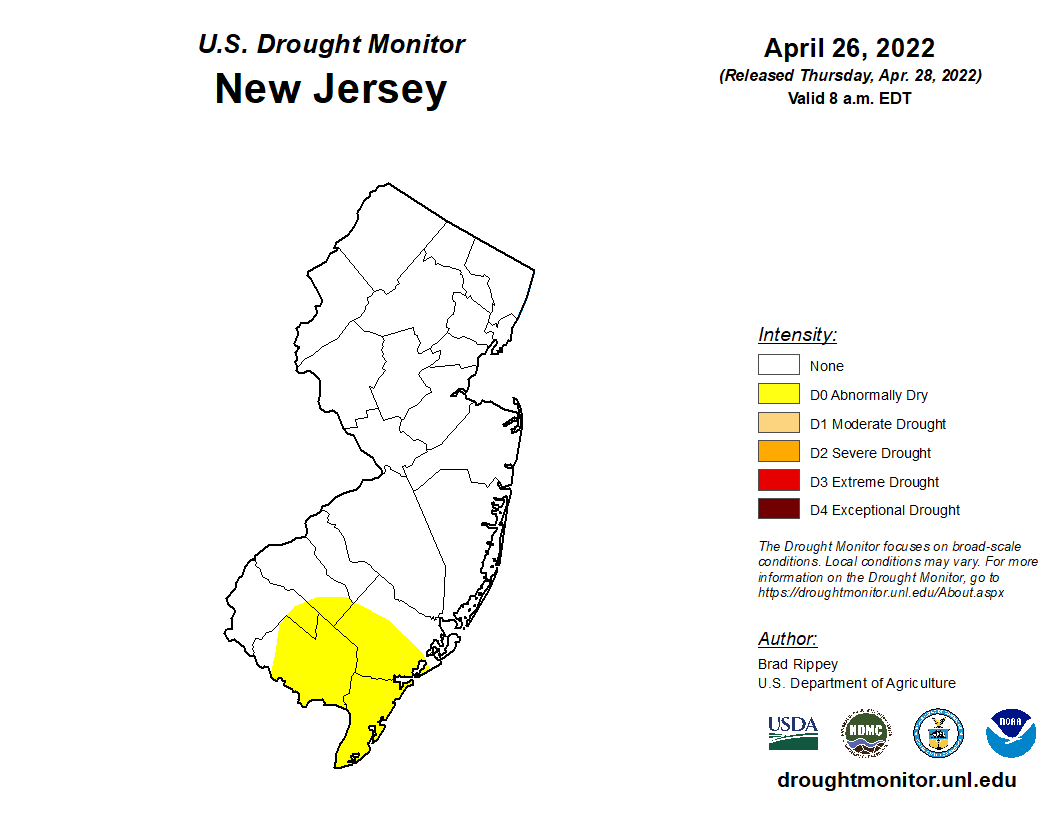Non-irrigation users as well as those who rely on irrigation can use this tool to forecast short term and long term conditions that will benefit or impact when and what to plant, when to water, and how precipitation or the lack thereof will help or hurt applications of nitrogen fertilizer and herbicides that require surface moisture for activation.
Here is the link to the USGS real time stream flow readings on the National Water Dashboard for Salem County and surrounding areas. Chose stream level data and aquifer type in the legend box to see streams near your location.
At the end of March, the county was about at an inch and a half deficit for rainfall compared to the 30-year average. Despite the inches received in April, streamflow readings at nine locations in the coastal plain aquifer system of South-Central NJ are much below normal. Ten readings are below normal, and one reading on Mantua Creek in Pitman, NJ is at an all-time low for this day.


